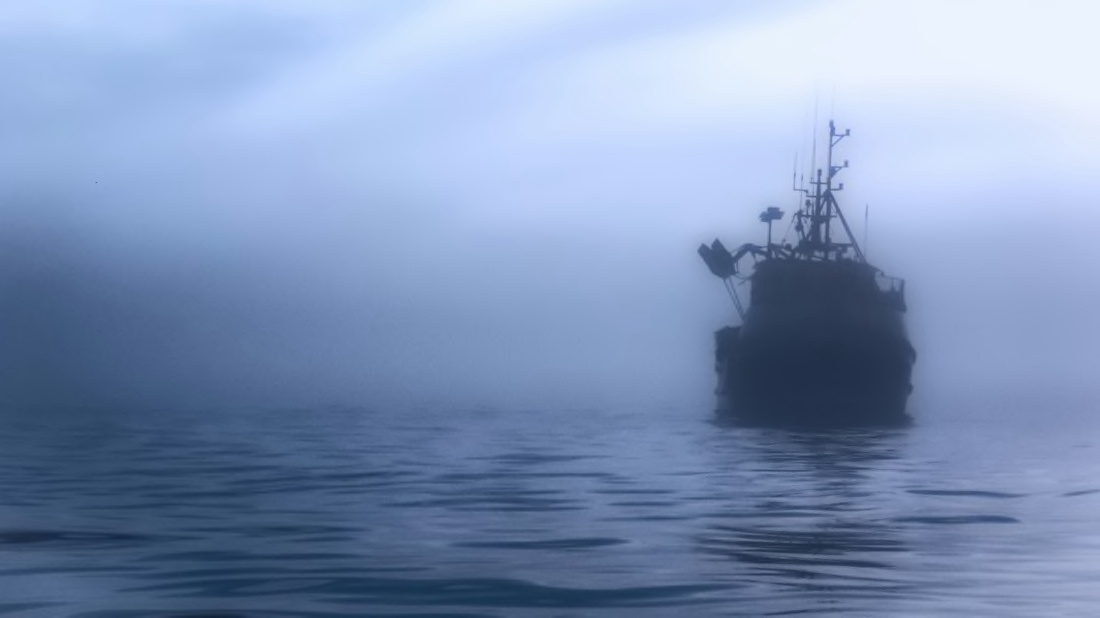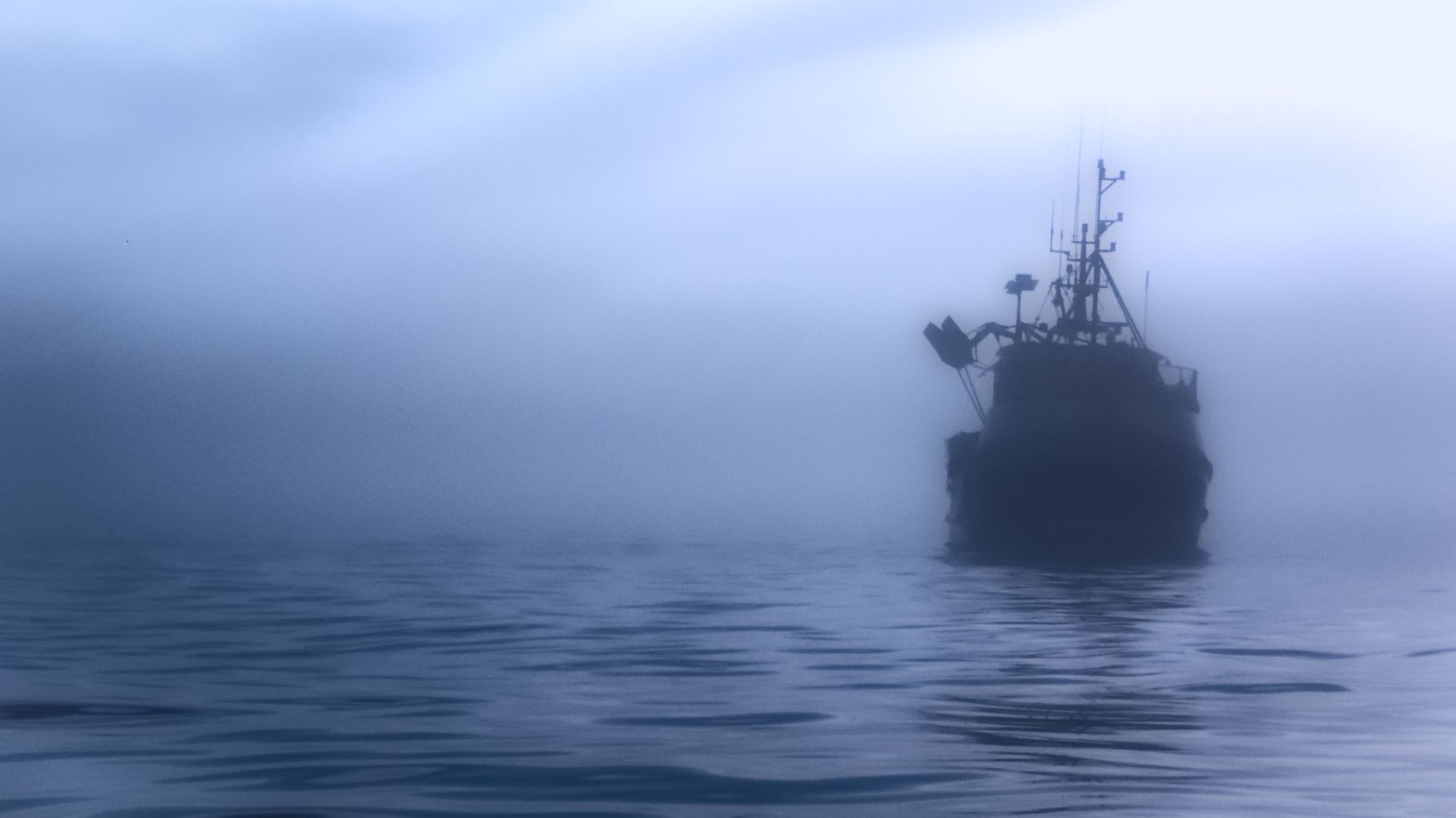
The distress call, if anyone indeed heard it, wasn’t something that could quickly be forgotten.
In May 1947, vessels passing through the bustling shipping route in the Straight of Malacca near Indonesia supposedly reported a crackling, desperate voice coming through their communications channels.
“All officers including captain dead,” the voice said, “lying in chartroom and on bridge, probably whole crew dead … I die.”
With those words, the S.S. Ourang Medan cargo ship would go down in infamy. For decades, stories have circulated of the crew being found dead following the distress call, with no obvious cause. Worse, their faces were said to be frozen in horror, anguish, or a combination of the two.
The Medan wouldn’t have been the first ship to meet a mysterious fate; one of the most infamous, the Mary Celeste, was discovered at sea completely devoid of any occupants in 1872. But what sets the Medan apart is that no one is completely sure what happened to its crew—or if it had ever been launched at all. Is the Medan a fiction perpetuated through the decades, or a ship that navigated into dangerous waters?
Even stranger: If the ship was indeed real, why was just one lifeboat missing?
Fantastic Voyage
The printed American origins of the S.S. Ourang Medan story date back to newspaper accounts that appeared beginning in 1948. The most frequent, by writer Win Brooks, provided a harrowing account of the ship’s voyage and its bewildering fate, a report picked up by The San Francisco Examiner and other reputable publications.
According to Brooks, the Medan was a then-40-year-old, 5000-ton cargo steamer ship, its name translating to “Man of Medan” in Malaysian. As Brooks is quick to point out, a masculine name for a ship was a break from tradition and could be construed as a sign of coming misfortune.
The Medan was passing through the Strait of Malacca with 23 crew members, including a captain and a number of workers native to Indonesia. Exactly what cargo it was carrying and where it was headed are details that don’t appear to have survived any accounts.
In any case, it never made it. In the story relayed by Brooks, an Italian officer of a ship received an SOS on his radio: “SOS from ship Ourang Medan. Ships with SW [shortwave] get urgent DH medico.”
This was followed by a slightly different message from the one reported in other accounts. “We are floating. Second officer dead on bridge. Captain and chief engineer dead in chartroom. Probably whole crew dead. Partly …”
Here, the messenger was said to have delivered unintelligible Morse code before continuing to speak. “I am dying.”
Then—nothing.
After receiving the distress call, rescuers headed toward the boat, a journey that took them into the following day. When they spotted the Medan, it was no longer moving, steam no longer billowing from smokestacks. It listed slightly.
A crew member from the responding ship attempted to rouse the attention of anyone on board with a loud-hailer, or loudspeaker. They were met with silence.
Climbing aboard, the men discovered the dead bodies of the crew along with one dead dog. The radio operator, presumably the one who had pleaded for help, was still by the radio. None appeared to have been subjected to any violence, but they also didn’t seem as though they went peacefully. Their postures were convulsed, their expressions twisted.
There was scant time to examine the bodies for clues. Not long after they boarded, the men were ordered to deboard after someone on their own ship noticed a smokestack on the Medan seemed to be catching fire. After climbing off, the rescuers watched as the Medan was rocked by a total of four explosions. Engulfed in flames, it sank into the water, taking information about its fate out of reach forever.
Strange Vessel
It’s not easy for a ship to simply disappear, as nautical travel usually involves records of departures, stops, and arrivals, among other evidence. The first and most concerning detail of the Medan story is that the ship was never registered with Lloyd’s Shipping, which kept records of ships.
But it’s certainly possible that the history of the vessel may have prevented an accurate chronicle of its whereabouts. “Medan” refers to a Sumatran island, where the ship may have been registered. Others believed the Medan was a Dutch ship that was commandeered by Indonesian pirates, who proceeded to ferry illicit cargo and would therefore have every reason to avoid being documented.
Of equal concern is how, exactly, the Medan’s story spread. According to Brooks, the tale spun out of Indonesia before arriving in the most popular Holland periodical, Elsevier’s Weekly, in January 1948. (Elsevier eventually grew to include a publishing arm in science that continues to this day.) That account was purportedly taken from the unnamed Italian officer who was part of the crew who responded to the distress call. The editor of Elsevier’s said he had bought the rights to the man’s story as well as a photograph of a body found on the Medan. The officer, the editor said, then disappeared and was not reachable.
The account then circulated in England and the United States, with details—like the exact words of the radio operator—sometimes varying.
In fact, Brooks and Elsevier’s Weekly were rather late with the news. The earliest British reports of the Medan’s fate were actually circa 1940. In these accounts, the distress call was similar, but the Medan’s radio operator soon abandoned a request for medical help and demanded a warship come to assist them. A British merchant ship responded and found roughly 12 dead bodies. It’s possible, one officer said, that there were more crew members, but the imminent explosion forced them to abandon the search. In this telling, the crew didn’t possess any frozen faces of terror, and requests for a “warship” may have implied an attack by pirates.
As the story spread, the most frequent speculation was that the ship had been subject to some kind of gas or chemical leak that had seen its crew members overcome—possibly a release of fumes after a rocky time at sea jostled their cargo. This theory was put forth in a 1953 German booklet titled Das Totenschiffin der Südsee (“The Death Ship in the South Seas”) by a man named Otto Milke, who wrote that potassium cyanide and nitroglycerine could have prompted an explosion and were also controversial enough cargo for the ship’s handlers to avoid scrutiny. But none of the rescuers were affected by any such fumes.
But remember that the Medan was found with one lifeboat missing. According to Brooks, the story of the Medan grew to involve speculation that there had been one survivor. After rowing away from the catastrophe, he was found alive on a Pacific island, where he told occupants that two gases had accidentally been mixed together to create a deadly toxic cloud. He was warned not to abandon ship, ignored it, and reached safety. He lived long enough to relate his tale and then died as a result of either chemical inhalation or time adrift at sea.
As Medium author Michael East pointed out in 2020, one name comes up repeatedly: Silvio Scherli. It was Scherli who told Dutch news outlets of the ship in 1940, and Scherli who may have been the source for accounts that same year. Did Scherli speak with Indonesian or Dutch newspapers again in 1948? Was Scherli also the man Elsevier’s Weekly spoke with in 1948, and who claimed to be an Italian officer on board the rescue ship? If so, it may be that Scherli simply fed a tall tale to reporters greedy for a compelling story. That would make his subsequent disappearance understandable.
If the Ourang Medan existed, it’s certainly possible the crew tried to maintain a low profile. It’s also conceivable a gas explosion was embellished by Scherli and others. Without conclusive proof for or against its existence, the idea of a lone radio operator pleading for help as crew members fell around him has endured for decades. It could be true. And where horror is concerned, that’s often enough.
